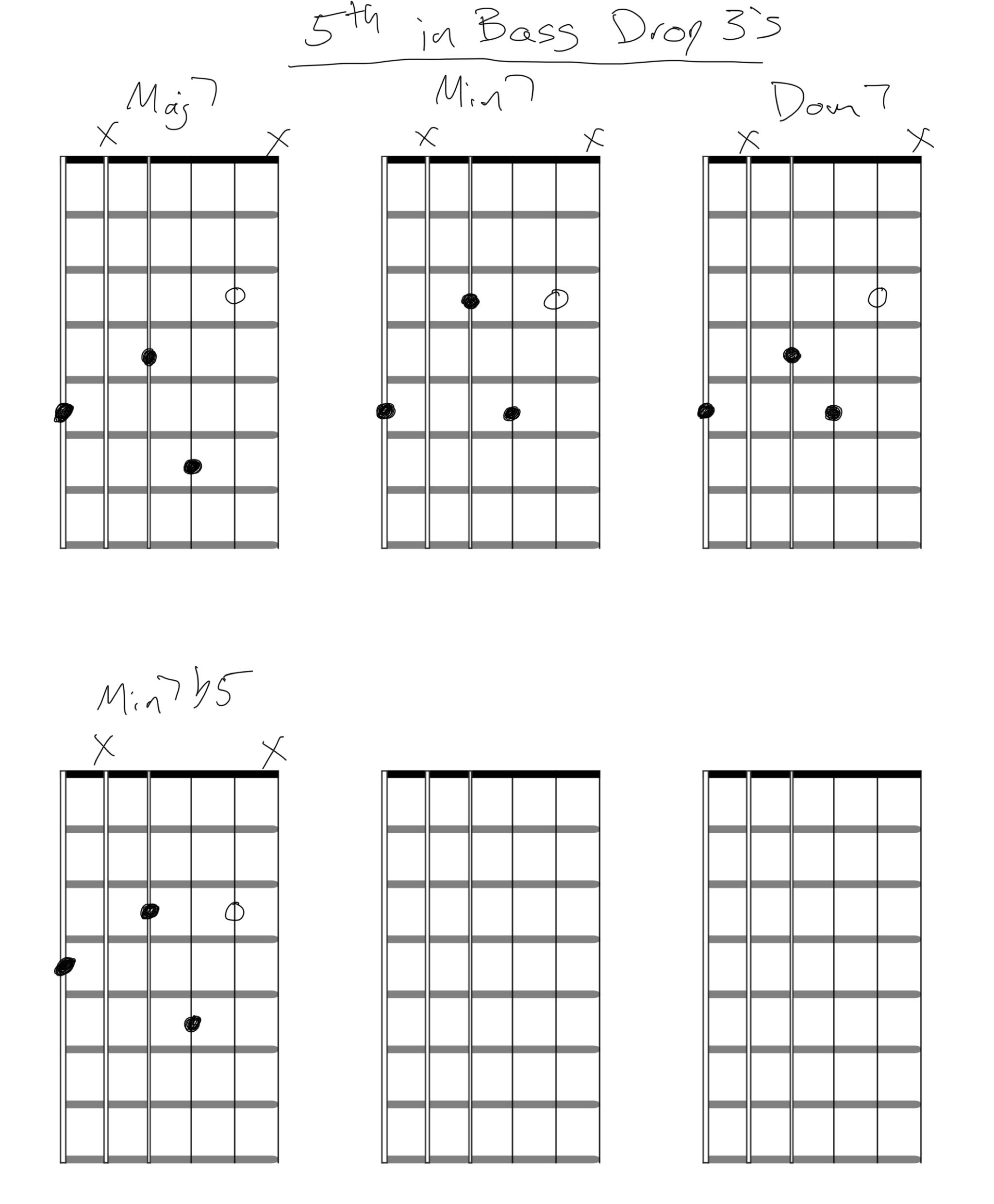I hope you’re doing well!
Today I wanted to share with you 8 chords that I consider essential knowledge for anyone starting out playing Jazz guitar. These voicings are known as drop 3 chords and once you are comfortable playing all 8 shapes you will be able to play almost any Jazz Standard! I have written out the four main chord types in both root position and second inversion (or “fifth in bass”) as these are the most stable sounding inversions of the chord. I have included chord charts below and a link to a YouTube video where I demonstrate how to play these chords as well! *All roots on the chord sheets below are left hollow*
YouTube Demo
Root Position Drop 3’s:
-I would recommend getting comfortable playing all these shapes on the third fret of the low E string (Root=G)
-Once you get comfortable with the shapes I would harmonize the G major scale moving all the way up the neck (Gmaj7, Amin7, Bmin7, Cmaj7, D7, Emin7, F#min7b5)
-After you have practiced this in G it’s incredibly useful to practice this in the other 11 keys as well!
Fifth In Bass (or second inversion) Drop 3’s:
-For these shapes I would recommend learning them in the key of D with the root on the third fret of the B string (remember this chord is inverted so that the root is on the B string and is therefor NOT the lowest note in the chord)
-Repeat the steps you took with root position chords! (In D major the harmonized sequence of chords would be Dmaj7, Emin7, F#min7, Gmaj7, A7, Bmin7, C#min7b5)
Once you have gotten comfortable playing these chords the next step is to apply them to a tune (or tunes!) that you’re working on!


